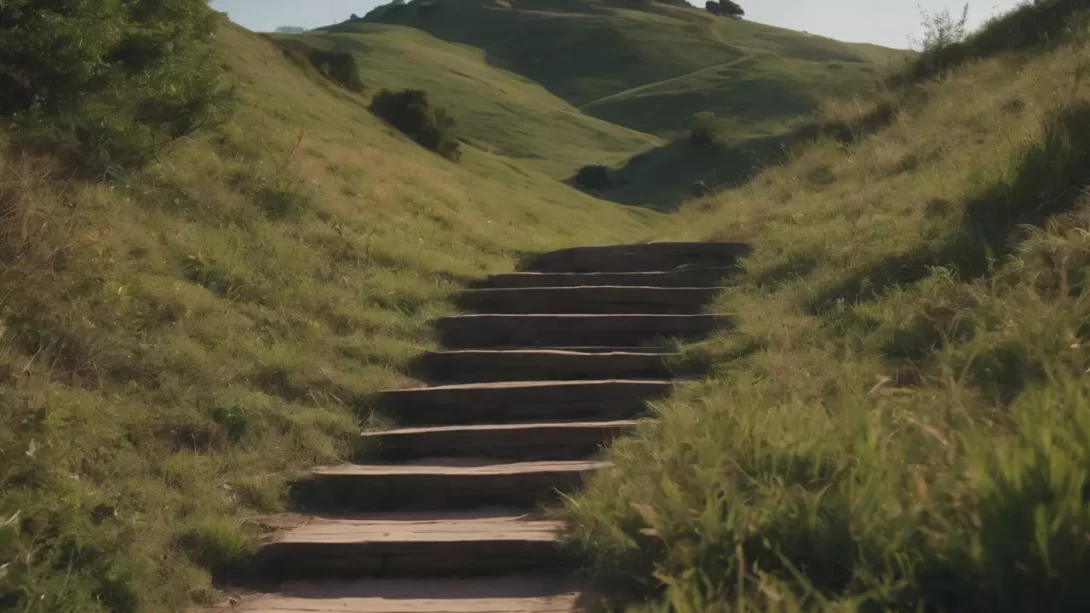Incorporating steps into a hillside is not only a practical solution for navigating sloped landscapes but also an excellent way to enhance the aesthetic appeal of your garden or outdoor area. Whether it’s for easier access to different levels of your garden or to prevent erosion on a steep slope, building steps can be a rewarding project. Proper planning and preparation are key to ensuring that the steps are both functional and visually pleasing.
Planning and Designing Hillside Steps
The first step in this project is to determine the exact location and purpose of your hillside steps. Consider how they will be used and what route they should take for maximum efficiency and safety. Measure the height and length of the hill to calculate the number of steps needed. This will help in deciding the size and height of each step, ensuring a comfortable and safe ascent or descent. When choosing materials, consider factors like the aesthetic harmony with your landscape, durability against weather elements, and the level of maintenance required. Common materials include wood, stone, and concrete, each offering different visual and functional qualities.
Gathering Materials and Tools
Once you have a plan in place, gather all the necessary materials. For wooden steps, you’ll need timber for risers and treads, and possibly stringers depending on your design. Stone steps might require large flat stones for the treads and smaller stones or gravel for leveling and filling. Concrete steps can be formed with concrete mix and wooden forms. Additionally, gather the necessary tools for the job, including a shovel for digging, a level to ensure your steps are even, a saw if you’re working with wood, and a hammer or mallet for securing materials. Safety equipment, like gloves and eyewear, is also essential.
Preparing the Hill for Step Installation
Before building the steps, it’s crucial to properly prepare the hillside. Start by clearing any vegetation, rocks, or debris from the area where you plan to install the steps. Next, mark the layout directly on the slope. This can be done using stakes and string to indicate the edges and risers of each step. During this process, consider the natural path people would take when walking up or down the hill to ensure the steps follow a logical and convenient route.
An essential aspect of this preparation is ensuring proper drainage. This prevents water accumulation that can lead to soil erosion or damage the steps over time. Plan for drainage by slightly tilting the steps for runoff or incorporating a drainage system beside or beneath them.
Constructing the Steps
The construction process varies depending on the chosen material:
Building Wooden Steps
- Cutting the Wood: If using stringers, cut them according to your measurements. Cut the treads (the flat part you step on) to the desired width.
- Assembling the Steps: Attach the treads to the stringers or directly onto the risers, ensuring they are level and secure.
- Securing the Steps: Anchor the steps into the hillside, making sure they are stable and won’t shift under weight.
Installing Stone or Concrete Steps
- Laying the Foundation: For stone steps, lay a foundation of compacted gravel or sand to stabilize the stones. For concrete steps, construct wooden forms in the shape of the steps.
- Placing the Steps: Place the stones or pour the concrete, shaping each step carefully. Ensure each step is level and well-compacted.
- Setting and Curing: Allow the materials to set properly. Stones may need to be adjusted as they settle, while concrete will need time to cure.
In both cases, the techniques for securing the steps into the hillside are crucial. This may involve burying part of the steps or using additional anchoring materials to ensure stability and longevity.
Finishing Touches and Landscaping
Once the main construction is complete, adding finishing touches can greatly enhance the functionality and appearance of your hillside steps. Safety features like handrails or balustrades are important, especially on steep inclines. They provide stability and support for users and can be made from materials that complement your steps, like wood or metal.
Adding lighting is another practical and aesthetic feature. Solar-powered lights or low-voltage landscape lighting can illuminate the steps at night, enhancing safety and creating a charming ambiance. Position the lights along the sides or embed them directly into the risers.
Landscaping around the steps is also crucial for both beauty and erosion control. Planting ground cover, shrubs, or ornamental grasses beside or between the steps can help stabilize the soil and add visual interest to your hillside. Choose plants that are suitable for your climate and the amount of sunlight the area receives.
Maintenance Tips for Longevity and Safety
To ensure the longevity and safety of your steps, regular maintenance is necessary. For wooden steps, check periodically for signs of rot or insect damage and reseal or repaint as needed to protect the wood. Stone and concrete steps should be checked for any shifts or cracks, especially after extreme weather conditions. Keep the steps clear of debris, snow, or ice, which can become hazards.
Conclusion
Building steps into a hill can significantly improve the accessibility and appearance of your outdoor space. By carefully planning, choosing the right materials, and executing the construction with precision, you can create a functional and attractive pathway that blends seamlessly with the natural landscape. Remember, the key to successful hillside steps is not just in the construction but also in the ongoing care and maintenance. With these steps in place, your garden or outdoor area will be safer, more accessible, and more enjoyable for years to come.




